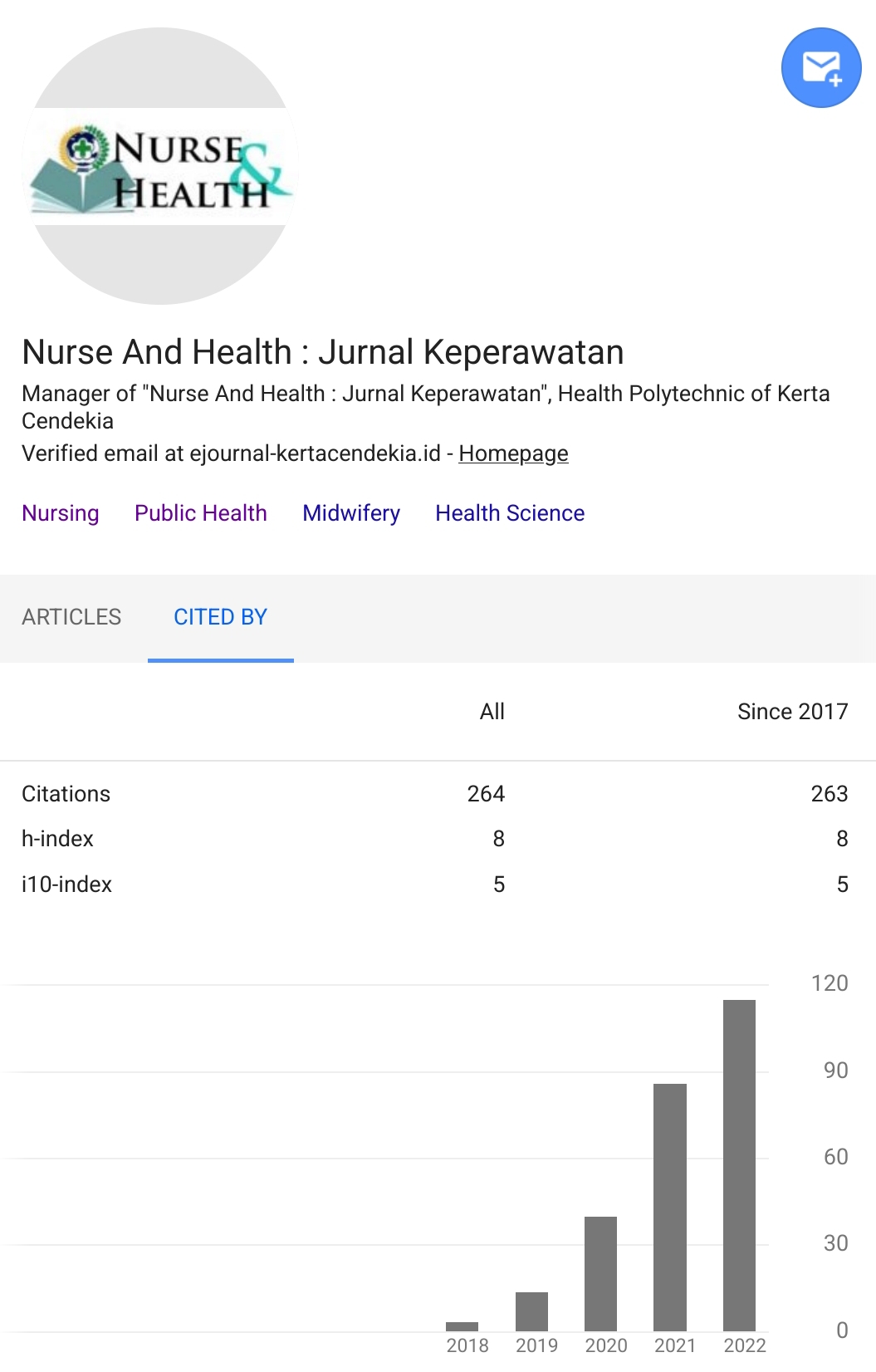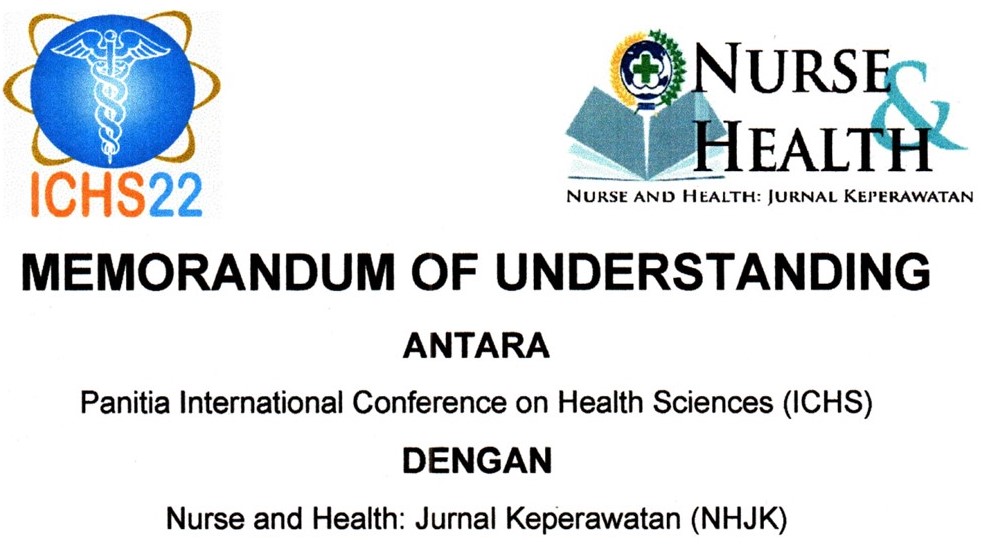EFFECTIVITY OF OXYGEN THERAPY IN NEUROLOGICAL DEFICITS IN ACUTE ISCHEMIC STROKE PATIENTS
Abstract
Background: Neurological deficits in acute ischemic stroke patients cause disrupted day living activities. The study aimed to analyze the difference in neurological deficits of acute ischemics stroke between patients with oxygen therapy in the stroke center room of Dr. Ramelan Hospital. Objectives: The study sample used total random sampling technique. Variable of this study were neurological deficit, using the NIHSS scale instrument is the National Institute of Health Stroke Scale and using the statistical Mann Whitney test. Methods: The research design used was quasi experiment. The population in the study was acute ischemic stroke patients in the stroke center room of RSPAL Dr. Ramelan Surabaya totaling 32 patients. Divide into 16 patients with oxygen therapy, 16 without oxygen therapy. The study was neurological deficit, using the NIHSS scale insrumen is the National Institute of Health Stroke Scale and using the statistical Mann Whitney Test. Results: The results showed that there was a significant difference in neurological deficit of two group with the Mann Whitney that P = 0.037 (P≤0.05). Conclusion: Acute ischemis stroke patients who are given oxygen therapy can cause decreased neurological deficits. The implications of this study are expected so patients can get oxygen therapy as the main therapy in the management of acute ischemic stroke.Downloads
References
ADA. (2020). Standards of medical care in diabetes-2012. Diabetes Care, 43 (SUPPL.1). https://doi.org/10.2337/dc12-SINT
Brady, T. J., Murphy, L., Colmain, B. J. O., Beauchesne, D., Daniels, B., greenberg, M., Chervin, D. (2013). A Meta analysis of health status, health behaviors, and health care utilization outcomes of the chronic disease self management program. Preventing Chronic Disease, 10, 1-14. https://doi.org/10.5888/pcd10.120112 DOI: https://doi.org/10.5888/pcd10.120112
Burroughs, T. E., Desikan, R., Waterman, B. M., Gilin, D., & Mcgill, J. (2004). Development and Validation of the Diabetes Quality of Life Brief Clinical Inventory. Diabetes Spectrum, 17 (1), 41-49. DOI: https://doi.org/10.2337/diaspect.17.1.41
Choi, Y.J., Lee, M.S., An, S.Y., Kim, T.H., Han, S.J., Chung, Y.S., Lee, K.W & Kim, D.J., 2011. The Realtionship between Diabetes Mellitus and Health-Related Quality of Life in Korean Adults: The Fourth Korea National Health and Nutrition Examination Survey (2007-2009). Diabetes Metabolism Journal, 35(6), pp. 587-594. DOI: https://doi.org/10.4093/dmj.2011.35.6.587
Hayes, A. J., Leal, J., Gray, A. M., Holman, R. R., & Clarke, P. M. (2013). UKPDS outcomes model 2: a new version of a model to simulate lifetime health outcomes mof patients with type 2 diabetes mellitus using data from the 30 year United Kingdom Prospective Diabetes Study: UKPDS 82 Lipids in Diabetes Study. Diabetologia, 56, 1925-1933. http://doi.org/10.1007/s00125-013-2940-y DOI: https://doi.org/10.1007/s00125-013-2940-y
Heinrich, E., Schaper, N. C., & Vries, N. K. De. (2010). Self management interventions for type 2 diabetes : a systematic review. EDN Autumn, 7 (2). DOI: https://doi.org/10.1002/edn.160
Jonkman, N. H., Schuurmans, M. J., Groenwold, R.H. H., Hoes, A. W., & Trappenburg, J. C. A. (2016). Identifying components of self management interventions that improve health related quality of life in chronically ill patient: systematic review and meta egression analysis. Jounal Patient Education and Counseling, 99 (7), 1087-1098. http://doi.org/10.1016/j.pec.2016.01.022 DOI: https://doi.org/10.1016/j.pec.2016.01.022
Litwak, L., Goh, S.-Y., Hussein, Z., Malek, R., Prusty, V., & Khamseh, M. E. (2013). Prevalence of diabetes complications in people with type 2 diabetes mellitus and its association with baseline characteristics in the multinational A 1chieve study. Diabetology & Metabolic Syndrome, 5 (1), 57. https://doi.org/10.1186/1758-5996-5-57 DOI: https://doi.org/10.1186/1758-5996-5-57
Palmer, J. S., Brandle, M., Trevisan, R., Federici, M. O., Liabat, S., & Valentine, W. (2014). Assessment of the association between glycemic variability and diabetes-related complications in type 1 and type 2 diabetes. Journal Diabetes Research and Clinical Practice, 105, 273-284. http://doi.org/10.1 DOI: https://doi.org/10.1016/j.diabres.2014.06.007
Papatheodorou, K., Papanas, N., Banach, M., papazoglou, D., & Edmonds, M. (2016). Complications of Diabetes 2016, 2016 DOI: https://doi.org/10.1155/2016/6989453
Perkeni. (2015). Konsensus Pengelolaan dan Pencegahan Diabetes Melitus Tipe 2 di Indonesia. PB Perkeni
Schmitt, A., Gahr, A., Hermanns, N., Kulzer, B., Huber, J., & Haak, T. (2013). The Diabetes Self-Management Questionnaire (DSMQ): development and evaluation of an instrument to assess diabetes self-care activities associated with glycaemic control. Health and Quality of Life Outcomes, 11, 1. http://doi.org/10.1186/1477-7525-11-138 DOI: https://doi.org/10.1186/1477-7525-11-138
Yusra, A. (2011). Hubungan antara dukungan keluarga dengan kualitas hidup pasien diabetes melitus tipe 2 di poliklinik penyakit dalam rumah sakit umum pusat fatmawati jakarta. http://eprints.ui.ac.id
Wulandari, Y.M & Isfandiari, A.M. (2013). Kaitan Sindroma Metabolik dan Gaya Hidup dengan Gejala Komplikasi Mirkovaskuler. Jurnal Berkala Epidemiologi, 1(2)
Zychowska, M., Rojewska, E., Przewlocka, B., & Mika, J. (2013). Mechanisms and pharmacology of diabetic neuropaty-experimental and clinical studies. Pharmacological Reports: PR, 65(6), 1601-10. https://doi.org/10.1016/S1734-1140(13)71521-4 DOI: https://doi.org/10.1016/S1734-1140(13)71521-4
Copyright (c) 2025 Ervin Damayanti, Ceria Nurhayati

This work is licensed under a Creative Commons Attribution-NonCommercial 4.0 International License.
Authors who publish with Nurse and Health: Jurnal Keperawatan agree to the following terms:
- Authors retain copyright licensed under a Creative Commons Attribution-NonCommercial 4.0 (CC BY-NC 4.0), which allows others to remix, tweak, and build upon the authors' work non-commercially, and although the others' new works must also acknowledge the authors and be non-commercial, they don't have to license their derivative works on the same terms.
- Authors are permitted and encouraged to post their work online (e.g., in institutional repositories or on their website) prior to and during the submission process, as it can lead to productive exchanges, as well as earlier and greater citation of published work (See The Effect of Open Access). Authors can archive pre-print and post-print or publisher's version/PDF.






















